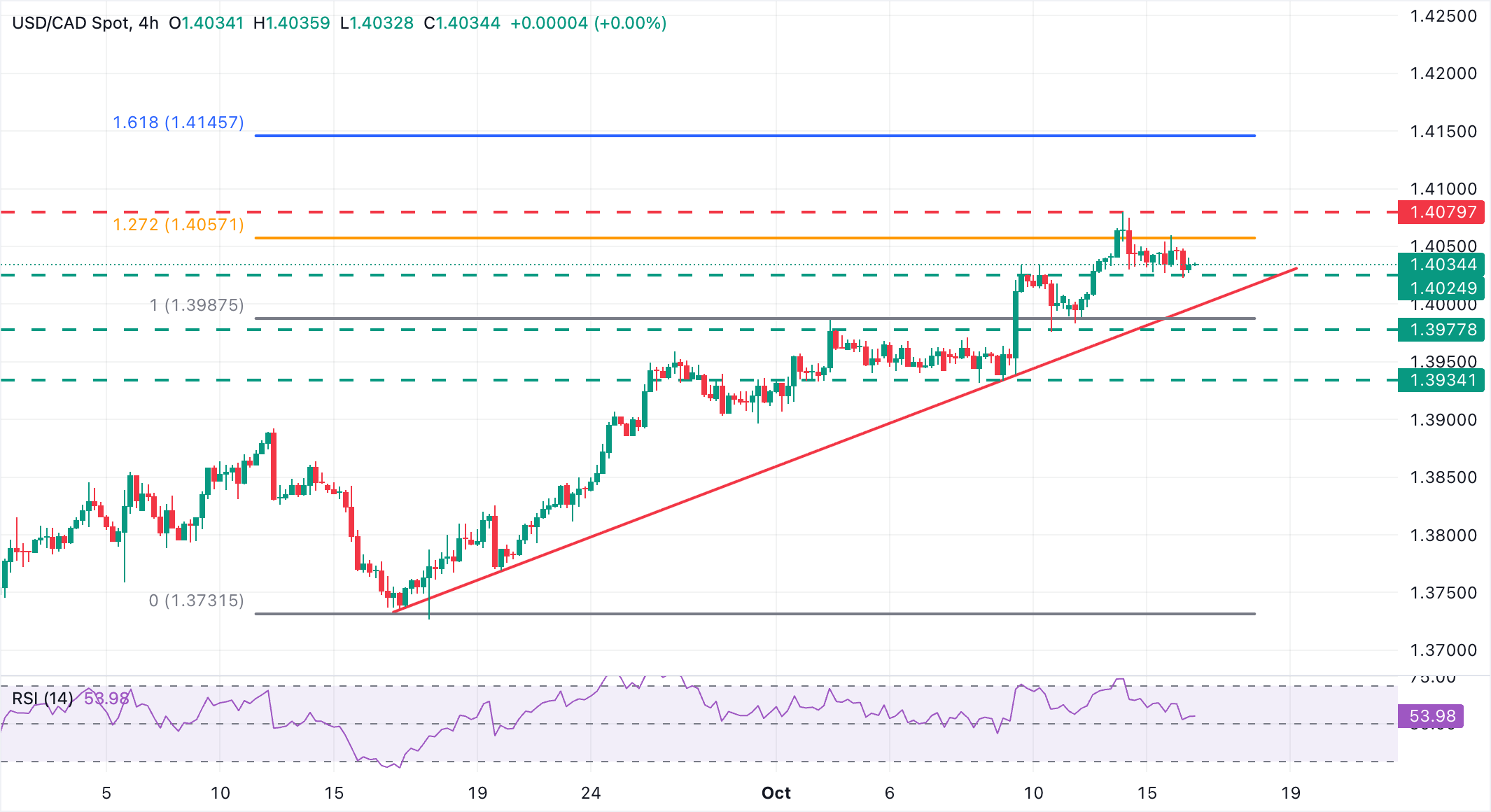USD/CAD Price Forecast: Testing support at the 1.4025 area
- The US Dollar is testing support near 1.4025 against the CAD, after pulling back from six-month highs right below 1.4080.
- The Low Oil prices are keeping the Canadian Dollar from appreciating higher against a weak USD.
- The UAD/CSD broader bias remains bullish from mid-September lows near 1.3700.
The US Dollar is trimming gains against the Canadian Dollar for the second consecutive day on Thursday. The pair is retreating from six-month highs at 1.4080 and testing support at the previous top in the area of 1.4025, which, so far, is holding bulls and maintaining the bullish structure intact.
Investors’ concerns that tensions between China and the US flare up are weighing on the US Dollar across the board. The Canadian Dollar, however, is failing to capitalise on the Greenback’s weakness, as low Oil prices –Canada’s main export– keep the Loonie’s bulls in check.
Technical Analysis: Correcting lower within a bullish trend

The current US Dollar’s reversal is seen as a corrective reaction following the bullish run from last week's lows around 1.3930. The 4-hour RSI is pulling back from overbought levels, and the mentioned support at the 1.4020 area is containing downside attempts for now.
A further reversal below the mentioned 1.4020 will meet the ascending trendline support at the 1.4000 area. Further down, the October 10 low is at 1.3980, while the key support is at the October 8 and 9 lows, in the area between 1.3930 and 1.3940.
Upside attempts, on the contrary, are likely to meet resistance at Wednesday’s high, of 1.4060, and the October 14 high, near 1.4080. A successful break of these levels would bring the 161.8% Fibonacci extension of the late September bull run, at 1.4145, into focus.
Canadian Dollar FAQs
The key factors driving the Canadian Dollar (CAD) are the level of interest rates set by the Bank of Canada (BoC), the price of Oil, Canada’s largest export, the health of its economy, inflation and the Trade Balance, which is the difference between the value of Canada’s exports versus its imports. Other factors include market sentiment – whether investors are taking on more risky assets (risk-on) or seeking safe-havens (risk-off) – with risk-on being CAD-positive. As its largest trading partner, the health of the US economy is also a key factor influencing the Canadian Dollar.
The Bank of Canada (BoC) has a significant influence on the Canadian Dollar by setting the level of interest rates that banks can lend to one another. This influences the level of interest rates for everyone. The main goal of the BoC is to maintain inflation at 1-3% by adjusting interest rates up or down. Relatively higher interest rates tend to be positive for the CAD. The Bank of Canada can also use quantitative easing and tightening to influence credit conditions, with the former CAD-negative and the latter CAD-positive.
The price of Oil is a key factor impacting the value of the Canadian Dollar. Petroleum is Canada’s biggest export, so Oil price tends to have an immediate impact on the CAD value. Generally, if Oil price rises CAD also goes up, as aggregate demand for the currency increases. The opposite is the case if the price of Oil falls. Higher Oil prices also tend to result in a greater likelihood of a positive Trade Balance, which is also supportive of the CAD.
While inflation had always traditionally been thought of as a negative factor for a currency since it lowers the value of money, the opposite has actually been the case in modern times with the relaxation of cross-border capital controls. Higher inflation tends to lead central banks to put up interest rates which attracts more capital inflows from global investors seeking a lucrative place to keep their money. This increases demand for the local currency, which in Canada’s case is the Canadian Dollar.
Macroeconomic data releases gauge the health of the economy and can have an impact on the Canadian Dollar. Indicators such as GDP, Manufacturing and Services PMIs, employment, and consumer sentiment surveys can all influence the direction of the CAD. A strong economy is good for the Canadian Dollar. Not only does it attract more foreign investment but it may encourage the Bank of Canada to put up interest rates, leading to a stronger currency. If economic data is weak, however, the CAD is likely to fall.


